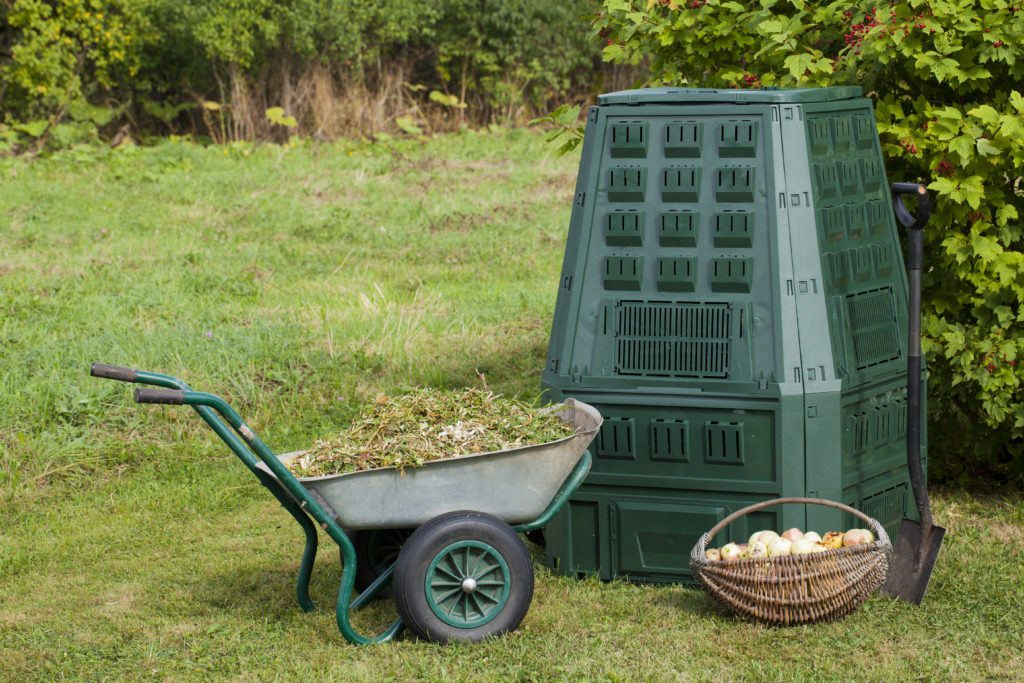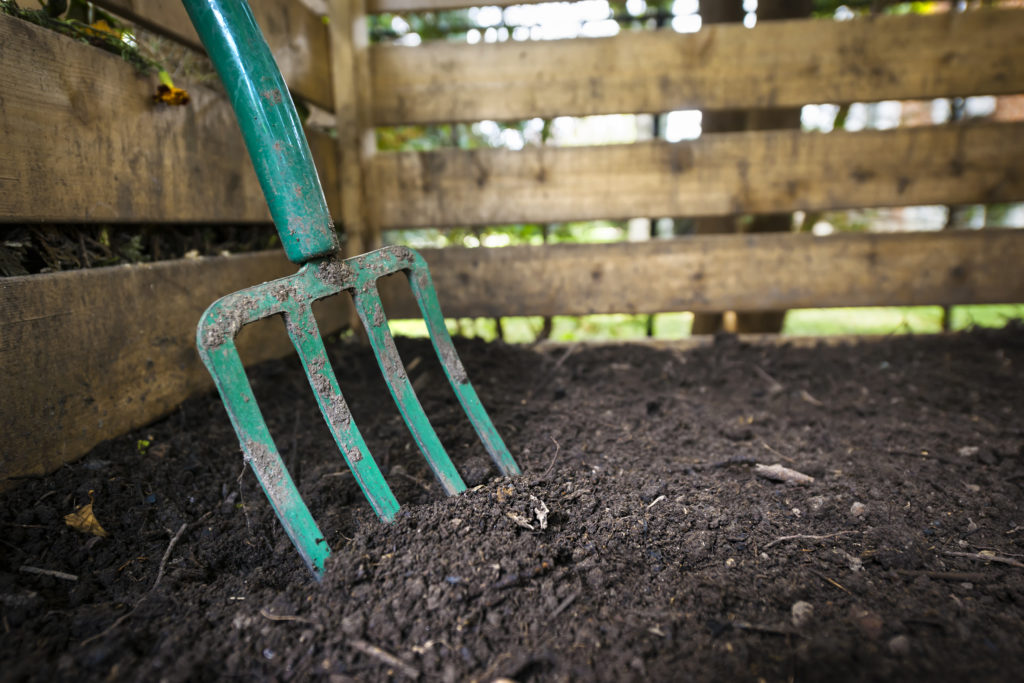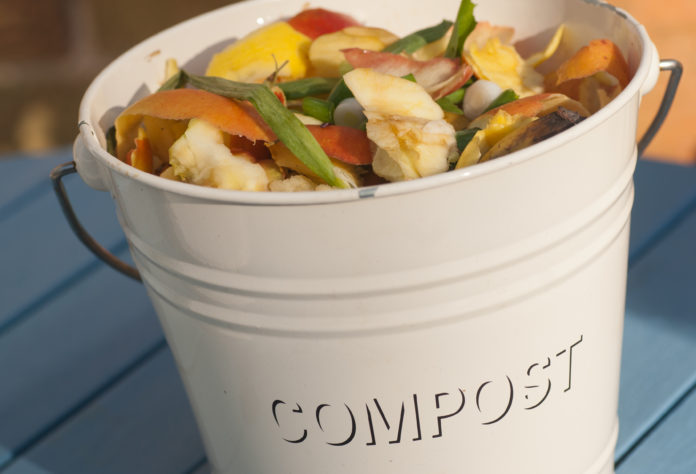If you are looking for a way to level-up your gardening game and you aren’t already repurposing kitchen scraps and garden refuse, composting is an easy habit and hobby that has multiple benefits. While some people might turn up their noses about keeping a compost heap in their own backyard, at-home composting is an ideal way to redirect organic matter away from our landfills and at the same time create quality soil that can help you with your gardening projects. By composting, you save money and your planet! For the uninitiated, beginning to compost may seem like an insurmountable task, but nothing could be simpler to get started with. Although we are still dealing with the heat of the summer, as we anticipate harvest season, this is the perfect time to get your composting game primed and ready. You can start composting anytime, but the fall season is an ideal time to start because of the availability of extra brown material to layer into your pile. Read below to learn more about what that means! We have put together some FAQ’s with our best answers so that you can get started today:
What is composting?

excellent garden soil and keep your trash cans empty.
- Composting is the deliberate cultivation of nutrient rich soil created through the decomposition of organic kitchen and yard waste. Composting relies on the correct carbon-nitrogen ratio in an environment of warmth, moisture, and oxygen. Green compostables, such as grass clippings, coffee grounds, and fruit and vegetable waste are nitrogen-rich. Brown compostables are the carbon-rich yard clippings, such as dead leaves, branches and twigs. Ideal compost piles layer brown and green materials.
What can I compost?
- Grass clippings
- Leaves
- Vegetable peels
- Fruit peels and rinds
- Egg shells (but not eggs)
- Coffee grounds
- Tea bags (but remove metal staples from tags if present
- Straw
- Sawdust
- Cow or horse manure
- Wood ash
What items do NOT belong in the compost pile?
- No feces from cats, dogs, humans, or other carnivores
- No meat products, animal bones or skins
- No heavy/tough plant material like branches
- No garden material that has been treated with pesticides or herbicides
- No weed seeds/roots
- No diseased plant material
- No dairy products or plant or animal fats (no grease)
- No charcoal

How do I compost?
- Keep a small covered container near (or under your kitchen sink) where you can place organic kitchen refuse instead of putting it down the disposal or in the trash can.
- Empty the receptacle on a regular basis onto the outdoor compost pile to prevent the smell from building up. Rinse it out well before filling it back up.
- On the outdoor pile, layer kitchen waste and grass clippings (which are green and nitrogen rich) and dried leaves and small twigs (which are brown and carbon rich). You can also and horse or cow manure.
- Moisten layers but don’t let it get soggy.
- Stir occasionally (Turn once a month using a pitch fork or shovel, or by crank if using a commercial bin that spin) the goal is to redistribute and create heat
- When you can’t recognize any scraps at the bottom of the bin, you can use the dark loamy soil once or twice a year in your garden beds.
- Spread compost on garden beds or use in container gardens
When can I start composting?
- Whenever you want!
- Fall is an ideal time to start because of the availability of both nitrogen (greens) and carbon (browns) materials
Where do I compost? There are several options for creating a space for your compost heap:
- Pick a convenient, level spot in your yard and just start making a pile
- Location should be in partial sun/shade and free of standing water
- Purchase a commercial container to place in your yard. The advantage of a commercial container is that it is covered and more protected from wild animals rummaging through it. Additionally, some commercial containers are made with a turning device that makes turning your pile easier since you won’t have to get out the pitch fork or the shovel.
- In a homemade bin. Some people like to create a holding container to keep things tidier than simply having a pile. With a homemade bin, you can design it to hold grass clippings until you are ready to layer them onto your pile.
- Free form pile…but if you pick this option, just be aware that your neighbors might not want to stare at your compost pile, so consider placing the heap in a more out of the way location
- In a temporary container under your kitchen sink that you take out to the large heap when it is full
Why do I need to compost?
- To create nutrient rich soil for your garden
- To save space in your trash
- Fun!
- Free!
Potential problems: these are all minor, but we are trying to be as transparent as possible here…
- Smell…if you don’t empty your kitchen pail enough or turn your outdoor pile frequently enough
- Insects: keep kitchen pail rinsed out regularly and cover kitchen scraps on the outdoor pile with grass clippings
- You need enough space… up to 9 square feet if you get really passionate about composting…less if you use a smaller commercial bin
- Attracting wild rodents…but again, if you turn the pile more frequently, layer regularly with grass clipping and leaves, or use a commercial bin, this won’t be a problem
- Messy…not really

In conclusion, here are the steps to get started:
- Decide you want to do it
- Choose a bin for the outdoors and a small pail for the indoors
- Choose a location for the outdoor bin or pile
- Start adding material
- Layer with grass clippings, dead leaves, to maintain a good carbon (brown materials) and nitrogen (green materials) ratio and moisten with water
- Turn the pile once a month. The more thoroughly you turn, the faster you will have finished soil
- Use your compost to grow healthy and happy plants!
A little patience will yield great rewards in the spring when you are getting ready to plant your seeds and seedlings. No more trips to the garden store to big up awkwardly heavy bags of commercial soil: you will have everything you need right in your own backyard. Your garden will thank you.




